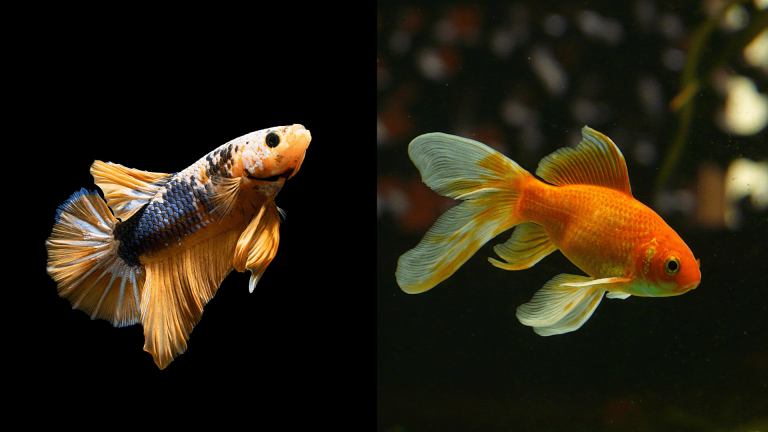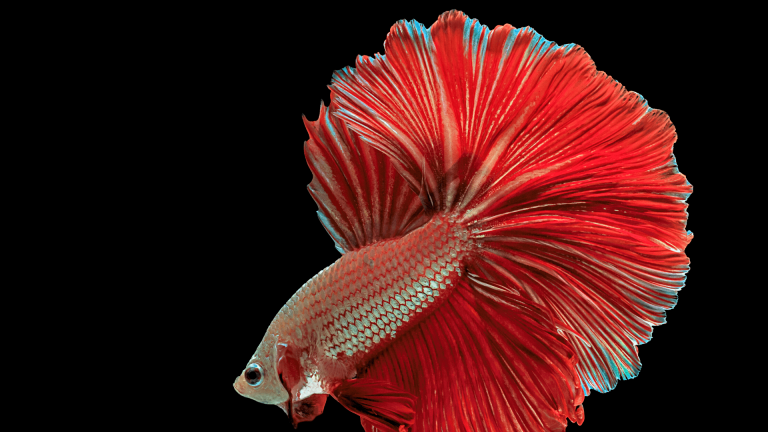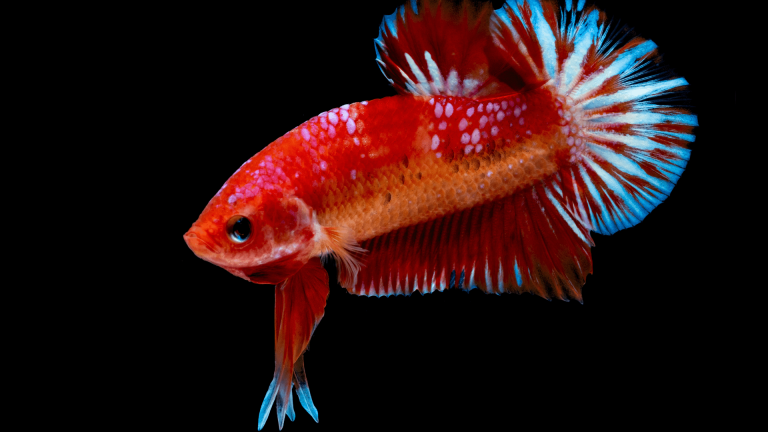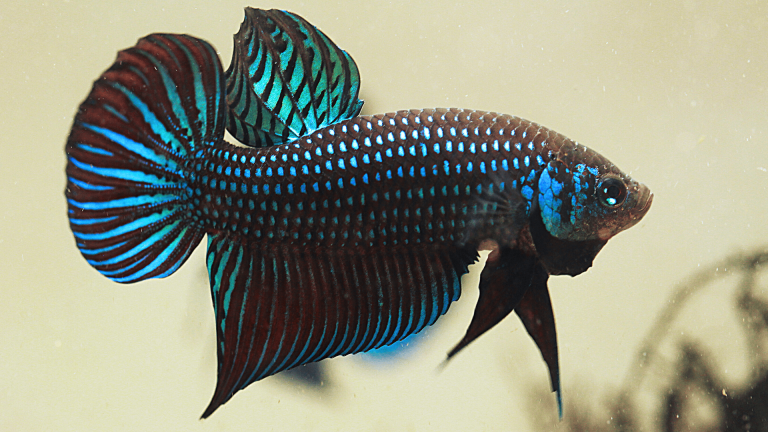Can Fish See at Night? Understanding Nocturnal Vision in Aquatic Life & 10 FAQs
The mysteries of the underwater world never cease to amaze us. From vibrant coral reefs to serene freshwater lakes, the aquatic environment is teeming with life that has evolved to thrive under diverse conditions. One intriguing question that often arises is whether fish can see at night. As the sun sets and darkness envelops the water, the mechanisms behind nocturnal vision in fish come into play. In this article, we’ll delve into the fascinating world of fish vision, exploring their ability to navigate and hunt in low-light conditions.
Are Fish Afraid Of The Dark?
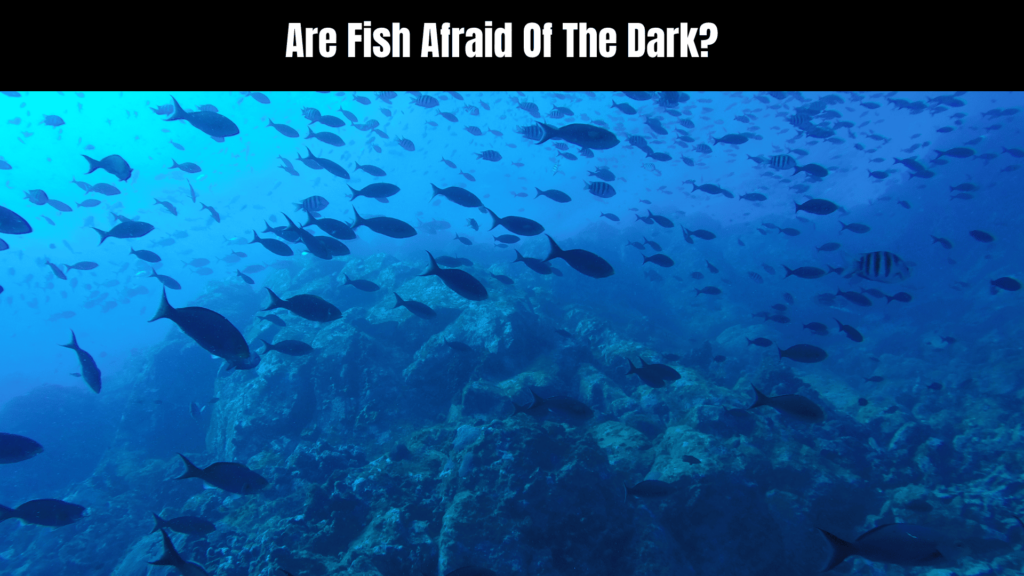
The mysterious underwater world is home to a myriad of creatures, each adapted to its unique environment. Among these creatures, fish exhibit a wide range of behaviors and adaptations that allow them to survive and thrive in aquatic ecosystems. One intriguing question arises is whether fish experience fear of the dark, similar to how some land animals might. In this article, we’ll dive into the topic and explore whether fish are truly afraid of the dark.
Perception of Darkness in Fish

Understanding how fish perceive darkness is crucial to determining whether they feel fear in low-light conditions. While fish do not experience darkness in the same way humans do, their visual and sensory adaptations gear toward navigating and thriving in environments with varying light levels.
1. Visual Adaptations:
Fish possess specialized adaptations that allow them to perceive their surroundings even in low-light conditions. Their eyes are often equipped with a higher number of rod cells, which are sensitive to dim light. Additionally, some fish species have a reflective layer behind their retinas called the tapetum lucidum, enhancing their ability to gather and amplify available light. These adaptations help fish detect movement and objects in dimly lit environments.
2. Sensory Perception:
Fish rely on a combination of senses beyond just vision. Their lateral line system detects changes in water pressure, vibrations, and movements, enabling them to sense their environment even in complete darkness. This sensory adaptation aids them in navigating, hunting, and avoiding predators.
Behavioral Responses
While fish do not experience fear in the same way higher mammals might, they do exhibit behaviors It can be interpreted as responses to perceived threats in low-light conditions.
1. Seeking Shelter:
In the wild, fish often have natural hiding spots where they retreat when they sense danger. These hiding spots can be used during both day and night, offering protection from predators. During the night, fish might be more inclined to seek out these shelters due to reduced visibility, helping them avoid potential threats.
2. Changes in Activity Levels:
Some fish species are known to alter their activity levels depending on the time of day. Nocturnal species may become more active at night, taking advantage of reduced competition and increased availability of prey. These behaviors are not necessarily driven by fear but rather by the natural rhythms of their environment.
What Fish Can See In The Dark?
The aquatic realm is home to a vast array of fish species, each with unique adaptations that enable them to survive and thrive in their underwater habitats. One remarkable adaptation found in some fish is the ability to see in the dark. While not all fish possess this capability, certain species have evolved specialized visual adaptations to navigate and hunt effectively during nighttime hours. In this article, we’ll delve into the world of fish with exceptional night vision.
Nocturnal Masters: Fish Species with Night Vision
Fish are capable of seeing in the dark and have developed specialized structures and mechanisms to enhance their vision under low-light conditions.
1. Catfish:
Catfish are well-known for their excellent night vision. They possess a high number of rod cells in their retinas, which are sensitive to dim light. Additionally, many catfish species have a tapetum lucidum, a reflective layer behind the retina that increases their ability to capture and amplify available light. This adaptation helps catfish detect movement and objects in the dark, making them skilled nocturnal hunters.
2. Lanternfish:
Lanternfish are a group of small, deep-sea fish that exhibit exceptional bioluminescence. While they are not entirely dependent on external sources of light, their ability to produce their light through specialized light-emitting organs called photophores allows them to communicate, camouflage, and navigate in the darkness of the deep ocean.
3. Flashlight Fish:
Flashlight fish are known for their bioluminescent abilities, which they use to communicate and find food in the dark. They have light-producing organs beneath their eyes, and the light can control them to send signals or attract prey. These fish have the remarkable ability to turn their bioluminescence on and off, essentially using it as a built-in flashlight.
4. Deep-Sea Hatchetfish:
Hatchetfish are another group of deep-sea dwellers that possess unique adaptations for seeing in the dark. They have large eyes relative to their body size, allowing them to capture as much available light as possible. This adaptation is crucial for their survival in the pitch-black depths of the ocean, where they need to detect the faintest glimmers of light.
5. Moray Eels:
Moray eels are known for their ability to hunt in crevices and caves, which often provide limited light. They have specialized sensory adaptations that allow them to detect vibrations and changes in water pressure, enabling them to locate prey even in complete darkness.
How Do Fish See Underwater In The Dark?
The underwater world presents unique challenges for its inhabitants, especially during the cover of darkness. Fish, however, have evolved remarkable adaptations that allow them to navigate and thrive in low-light conditions. In this article, we will explore the intricate mechanisms that enable fish to see underwater in the dark.
1. Specialized Retinal Structures:
Fish eyes have evolved specific structures to capture and process available light, even in dimly lit environments.
– Rod Cells: Fish retinas contain a high density of rod cells, specialized photoreceptor cells that excel in detecting low levels of light. These cells are sensitive to different wavelengths of light and enable fish to perceive their surroundings even when illumination is scarce.
– Tapetum Lucidum: Many fish have a reflective layer behind their retinas called the tapetum lucidum. This layer acts like a mirror, reflecting light that passes through the retina back into the eye. This reflection enhances the amount of light available for photoreceptor cells to detect, improving a fish’s ability to see in the dark.
2. Sensitivity to Different Wavelengths:
Fish have developed sensitivity to different wavelengths of light, allowing them to perceive their environment in varying degrees of darkness.
– Blue and Green Light: Nocturnal fish often exhibit a heightened sensitivity to blue and green wavelengths of light. These wavelengths are more prevalent in underwater environments during nighttime due to the absorption of longer wavelengths. This adaptation allows fish to detect changes in their surroundings, such as movement and contrast, even in low-light conditions.
3. Pupil Adjustments:
Fish eyes can adjust their pupils to regulate the amount of light entering the eye.
– Pupil Dilation: Many fish species dilate their pupils in low-light conditions to allow more light to enter the eye. This adaptation maximizes the capture of available light and helps fish detect movement and objects in the dark.
– Pupil Constriction: Fish can also constrict their pupils during brighter periods to reduce the amount of light entering the eye. This flexibility allows them to adapt to changing light conditions and prevent excessive light exposure.
4. Sensory Adaptations:
Fish rely on senses beyond just vision to navigate and interact with their environment.
– Lateral Line System: The lateral line system is a series of sensory organs along a fish’s body that detects changes in water pressure and vibrations. This adaptation enables fish to sense movement, currents, and nearby objects, even in complete darkness.
Do All Fish Have Night Vision?
The underwater world is a realm of diversity, where countless fish species have evolved to thrive in their specific environments. When it comes to night vision, not all fish are created equal. While some fish have developed remarkable adaptations for seeing in the dark, others rely on different senses and behaviors to navigate low-light conditions. In this article, we’ll explore the varied landscape of night vision in fish.
Diverse Approaches to Nocturnal Adaptation
Night vision is not a universal trait among fish. Instead, different species have adopted diverse strategies to cope with the challenges of darkness.
1. Nocturnal Specialists:
Some fish species have evolved specialized adaptations that enable them to see exceptionally well in low-light conditions.
– Rod-Rich Retinas: Nocturnal specialists possess retinas with a higher concentration of rod cells, which are sensitive to low levels of light. These rod cells allow them to detect movement and objects in dimly lit environments.
– Reflective Layer (Tapetum Lucidum): Certain fish species possess a reflective layer behind their retinas, known as the tapetum lucidum. This layer enhances their ability to capture and amplify available light, contributing to their superior night vision.
– Pupil Dilation: Nocturnal fish often can dilate their pupils in darkness, allowing more light to enter their eyes and enhancing their visual perception.
2. Dim-Light Adaptations:
While not all fish have specialized night vision, many have developed adaptations that allow them to function in low-light conditions.
– Adjusted Activity Patterns: Some fish are naturally more active during the night, taking advantage of reduced competition and increased availability of prey. While not exclusively night vision adaptations, these activity patterns allow them to function in darkness.
– Sensory Adaptations: Fish possess a range of sensory adaptations beyond vision, such as the lateral line system, which helps them detect movement, vibrations, and changes in water pressure. These adaptations enable fish to navigate and interact with their environment even in the absence of light.
3. Nocturnal Behavior:
Some fish may not possess specialized adaptations for night vision, but they exhibit behaviors that align with nocturnal activity.
– Seeking Shelter: Many fish, regardless of their visual adaptations, seek shelter during the night as a means of protection from predators. This behavior is not rooted in night vision but rather a strategy to minimize exposure during vulnerable hours.
How Do Fish Get Food Or Swim In Darkness?
The underwater world transforms into a different realm when darkness falls. For fish, this presents a unique set of challenges and opportunities. How do they manage to find food and swim effectively in the absence of light? In this article, we will explore the fascinating strategies that fish employ to feed and move in darkness.
1. Feeding Strategies in Darkness:
In the cover of the night, fish must adapt their feeding strategies to locate and catch prey efficiently.
– Enhanced Sensory Perception: Many nocturnal fish species rely on their heightened senses to detect prey. Their lateral line system, which senses vibrations and movements in the water, helps them locate nearby prey. Additionally, specialized chemoreceptors enable them to detect chemical cues released by potential food sources, even in low-light conditions.
– Opportunistic Feeding: Some fish take advantage of the increased activity of certain prey organisms during the night. Insects and smaller aquatic creatures that are more active in the dark become targets for these opportunistic feeders.
– Bioluminescence: In some deep-sea environments, fish rely on bioluminescence to attract or locate prey. They may produce their light or respond to the faint glows of other organisms. For example, lanternfish use bioluminescence for both communication and hunting purposes.
2. Navigating and Swimming in Darkness:
The ability to move efficiently in darkness is crucial for fish survival, allowing them to avoid predators, find shelter, and explore their environment.
– Enhanced Night Vision: Nocturnal fish often possess adaptations that improve their night vision. It includes having a higher density of rod cells in their retinas, which are sensitive to dim light, as well as the presence of a tapetum lucidum, a reflective layer behind the retina that enhances their ability to capture and amplify available light.
– Memory and Spatial Awareness: Many fish rely on their spatial memory and awareness of their environment to navigate in darkness. They might remember the locations of hiding spots, feeding areas, and other important landmarks.
– Sensory Perception: Fish use their lateral line system, sensitive to changes in water pressure and vibrations, to navigate and detect obstacles in the dark. This helps them maintain their course and avoid collisions.
– Moonlight and Starlight: Some fish are known to use moonlight or starlight as reference points to orient themselves and navigate. These natural light sources provide some level of illumination that aids in their movement.
Do Fish Need Lights Off At Night?
Providing the optimal environment for pet fish is a top priority for aquarium enthusiasts. One common question that arises is whether fish require lights to turn off at night. To address this, it’s essential to understand the natural behaviors and adaptations of fish to light and darkness.
The Natural Cycle: Light and Darkness in Aquatic Habitats
In the wild, aquatic ecosystems experience a natural cycle of light and darkness, which significantly influences the behavior and well-being of fish.
1. Nocturnal Behavior: Many fish species are naturally adapted to be more active and feed during the nighttime. In their natural habitats, they take advantage of the cover of darkness to hunt for prey, explore their environment, and avoid predators.
2. Circadian Rhythms: Fish, like other living organisms, have internal biological clocks known as circadian rhythms. These rhythms help regulate their activities, including feeding, rest, and reproduction. The transition between light and darkness plays a crucial role in maintaining these rhythms.
The Need for Darkness in Aquariums:
Recreating a natural day-night cycle in aquariums is essential for the health and well-being of fish. Therefore, providing periods of darkness at night is generally recommended for several reasons:
1. Rest and Recovery: Just like humans, fish benefit from periods of rest. Darkness allows fish to rest, reduce their activity levels, and conserve energy.
2. Reduces Stress: Continuous exposure to light can cause stress and disrupt fish’s natural behaviors. Providing periods of darkness mimics their natural environment and helps alleviate stress.
3. Regulates Circadian Rhythms: Maintaining a consistent day-night cycle helps regulate fish’s internal biological clocks and ensures their physiological processes remain balanced.
4. Prevents Algae Growth: Allowing complete darkness at night can help prevent excessive algae growth in the aquarium, as some algae thrive in continuous light conditions.
Balancing Light and Darkness:
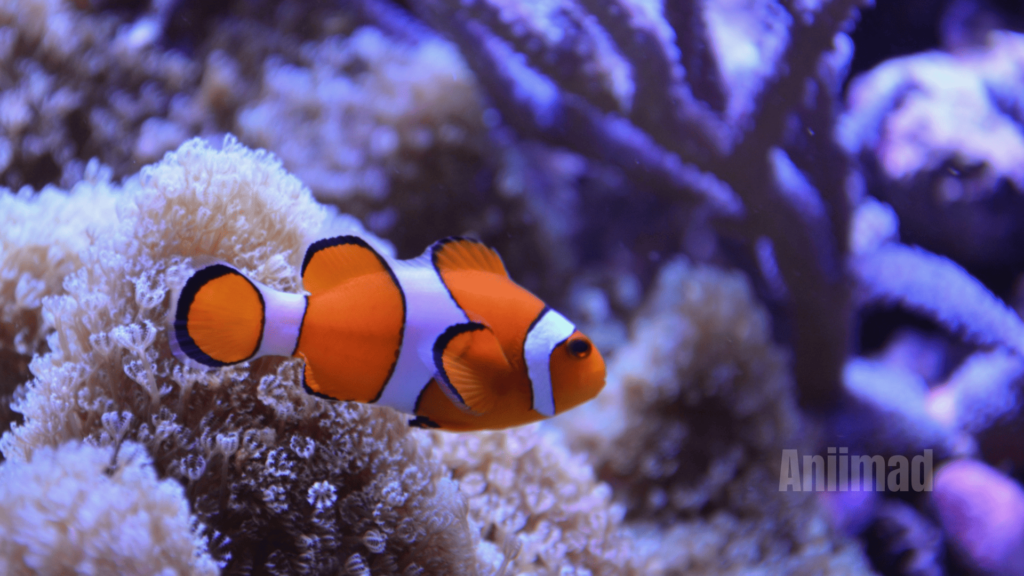
While darkness is essential, achieving a balance between light and darkness in your aquarium is key to creating a healthy and natural environment for your fish.
1. Use Timers: Use timers to control the lighting schedule in your aquarium. This ensures a consistent day-night cycle, which benefits fish and other aquatic inhabitants.
2. Adjusting Light Intensity: If your aquarium is home to a mix of diurnal (active during the day) and nocturnal fish, consider adjusting the intensity of the aquarium lights during the day to cater to the needs of both types.
3. Monitoring Behavior: Observe the behavior of your fish to determine if they are exhibiting signs of stress or irregular activity. Adjust the lighting schedule accordingly if needed.
Frequently Asked Questions About Fish Night Vision
1. Can fish see at night?
Yes, many fish species have evolved adaptations that allow them to see in low-light conditions. While not all fish possess night vision, those that do have specialized structures and mechanisms in their eyes enable them to navigate and hunt effectively in darkness.
2. What adaptations do fish have for night vision?
Fish with night vision often have a higher density of rod cells in their retinas, which are sensitive to dim light. Some species also possess a reflective layer called the tapetum lucidum that enhances their ability to capture and amplify available light. Pupil dilation and sensitivity to specific light wavelengths are other adaptations that improve their ability to see in the dark.
3. Do all fish species have night vision?
No, not all fish species have night vision. While many nocturnal fish have evolved specialized adaptations for seeing in the dark, diurnal (day-active) species might not possess the same level of night vision. Some fish rely on other senses and behaviors to navigate in low-light conditions.
4. How do fish find food at night?
Nocturnal fish employ various strategies to find food in darkness. These include relying on heightened senses such as their lateral line system and chemoreceptors to detect vibrations and chemical cues from potential prey. Some fish are opportunistic feeders, taking advantage of increased prey activity during the night.
5. Do fish change their behavior at night?
Yes, many fish species exhibit changes in behavior at night. Nocturnal fish tend to become more active during the nighttime hours, taking advantage of reduced competition and increased prey availability. Diurnal fish might seek shelter and rest during the night to avoid predators.
6. Do fish need darkness at night in aquariums?
Yes, providing periods of darkness at night in aquariums is recommended to mimic the natural day-night cycle. It helps fish rest, regulate circadian rhythms, reduce stress, and prevent excessive algae growth. Using timers to control the lighting schedule can help maintain this balance.
7. Can fish navigate and swim in darkness?
Yes, fish evolve various adaptations to navigate and swim effectively in darkness. Enhanced night vision, use of sensory mechanisms like the lateral line system, and reliance on natural light sources like moonlight or starlight are some strategies fish use to move in low-light conditions.
8. How do fish avoid predators in the dark?
Fish that are active during the night have developed strategies to avoid predators. Their enhanced night vision helps them detect potential threats, and they might seek shelter or use their sensory adaptations to sense approaching predators.
9. Can fish be stressed by continuous light at night?
Yes, continuous exposure to light at night can stress fish and disrupt their natural behaviors. Providing periods of darkness in aquariums helps alleviate stress, maintain healthy behaviors, and regulate their internal biological clocks.
10. How can I create a natural day-night cycle for my aquarium fish?
Using timers to control the lighting schedule, adjusting light intensity, and observing fish behavior are ways to create a balanced day-night cycle in your aquarium. Striving for a schedule that mimics the natural environment of the fish will contribute to their overall well-being.
Conclusion
The question of whether fish can see at night has a resounding affirmative answer. Through intricate adaptations in their eyes and behavior, many fish species have demonstrated their remarkable ability to thrive in low-light conditions. From hunting and foraging to predator avoidance and navigation, their nocturnal vision serves as a testament to the wonders of evolution and adaptation in the aquatic world. So, the next time you gaze upon a tranquil lake or a bustling reef at night, remember that beneath the surface, a vibrant and visually sophisticated world of fish activity is underway.
